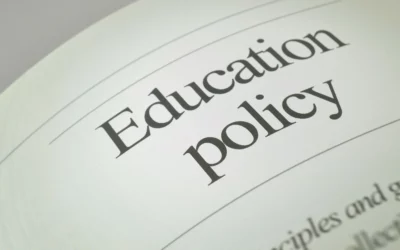
Written by Christine Cooke Fairbanks
February 15, 2023
With the passage of the Utah Fits All scholarship program, Utah has signaled its commitment to offering options to families, with ripple effects likely to follow in how we approach education policy generally.
One such ripple might be the additional individualized education options proposed through the Boost Up Supplemental Grant Program offered in HB 394 – Grant Funding for Supplemental Educational Opportunities.
The Boost Up Supplemental Grant Program allows any Utah student to apply for a $1,000 grant to use for a variety of supplemental education materials and services outside the scope of their typical school day.
Ultimately, the bill is intended to offer academic assistance through parent choice and flexible options, which is especially important considering the learning loss from the COVID-19 pandemic school closures.
The Boost Up supplemental grant has potential to do this and also to cement Utah’s parent-led, student-focused, choice-embedded approach.
Still, a microgrant is different from an education savings account and other scholarships offered in the state, and therefore it ought to be considered on its own merits for how well it meets its objective.
Supplementing education to assist with learning loss
Microgrants seen in the country so far, including Indiana and Idaho, offer families funds to pay for services or materials to supplement a child’s education, specifically to overcome COVID-19 learning loss, but not to fund a parent’s choice of where to enroll their child in school.
Utah’s HB 394 offers a similar opportunity for academic assistance, with significant differences from education choice scholarships like Utah Fits All. To make that distinction clear, HB 394 prohibits funds from paying for private school tuition.
Because it is supplemental, the program was created as a grant, not a stream of money that goes into an ongoing account. The grant size is $1,000 and the program’s envisioned budget is only $12 million (a Utah Fits All scholarship is $8,000 and the program’s intended budget is $42 million). Those awarded a grant have access to the funds for two years, and any remaining funds after that period go back to the program to be used for additional grants. These limiting features make the program narrower in scope, which is appropriate given its objective to assist with supplemental learning opportunities but not pay for a child’s education.
Eligibility of students
Ideally a microgrant policy aimed at assisting students who need additional academic assistance would be eligible for all school-age students in a state who need it. Low-income students are the least likely to be able to afford extra academic assistance, so a thoughtful policy might prioritize them while leaving the program open to others as well. For example, Idaho’s bill opens its program to all school-age children and prioritizes it based on income, while Indiana’s program is narrower, basing eligibility on enrollment in an Indiana school, income categories, and specific scores on a state test.
Along with prioritizing low-income families, the original text of Utah’s HB 394 bases program eligibility on whether a student is “eligible to attend any grade from kindergarten through grade 12 in the public system.”
Creating financial and academic accountability
Public policy often requires multiple types of accountability, and education policy should have mechanisms for at least financial and academic accountability. The Idaho and Indiana microgrants require that vendors sign up with the state so they can be vetted, a way to ensure funds are only being spent on legitimate vendors who are likely to give academic support.
Likewise, HB 394 seeks to address accountability by routing funds directly to vendors through the state board – rather than directly to parents – to reduce misuse of funds. It also seeks to ensure that providers are meeting an “academic outcome” at the outset. All of this is important taxpayer accountability.
Accountability to parents and students academically is increased through the number of options, ease of expanding the provider list, and ability to change vendors as needed to find the best fit. The best policy for HB 394 would ensure that parents can directly give recommendations for vendors based on their wants, needs or beliefs, so the list of vendors is as meaningful as possible to student needs.
Overall, Utah’s effort to offer increased education options through the Boost Up Program is a good step toward helping students close learning gaps and individualize education. As legislators weigh its merits, they should consider ways to make sure it is meeting the objective of supplementing education for as much of Utah’s student population as possible by making the list of vendors meaningful to students needing academic assistance.
More Insights
Read More
Education policy to consider during the 2024 election season
Here’s a look at what each presidential candidate is likely to focus on in education, given their track records and campaign platforms.
Ignoring the text of the Constitution is a mistake
A written Constitution is entirely superfluous if the document is simply meant to give the people what they want.
What you need to know about election integrity
It should be easy to vote and hard to cheat. This oft-quoted phrase has been articulated as a guiding principle by many elected officials wading into voting and election policy debates in recent years. So why has this issue been so contentious, and what’s the solution?


